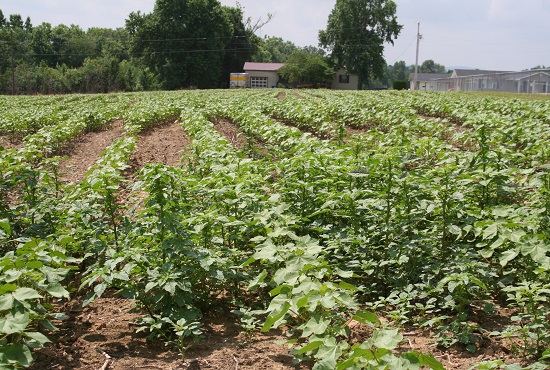DNA Tagging Program Implemented with U.S. Pima Cotton
PR-USA.net
Applied DNA Sciences, Inc., a provider of DNA security solutions, announced recently that it has successfully marked over 500,000 pounds of raw cotton fiber with a naturally derived botanical marker called SigNature DNA, as part of a pilot study conducted in collaboration with one of America’s largest cotton growers. SigNature DNA was detected homogeneously throughout the various stages of cotton processing, before and after baling, right down to the single cotton fiber. The persistence and stability of the SigNature DNA marker ensured that it was successfully authenticated.
The inclusion of SigNature DNA at such a large scale is the largest deployment of a commercial DNA marker to date. This work is a complement to the tracking of cotton’s native DNA in APDN’s Biomaterial Genotyping platform, known as “FiberTyping.” By authenticating native DNA, APDN ensures that a retail product contains the cotton claimed on the label. Native DNA can also be used to determine the cultivar, and hence the country, from which the original cotton was derived. SigNature DNA markers would allow a specific farmer of natural fibers, or a producer of synthetic fibers, to track specific batches of fiber through to finished textiles and apparel.
Jeff Elder, Chairman of Supima, who represent the growers of American pima cotton, stated: “We strive to assure quality products in a cost effective manner. Authentication of cotton fiber in finished products provides us with a leading edge in today’s highly competitive global marketplace.”
Annual business revenue stimulated by cotton in the US economy exceeds $120 billion, making cotton America’s number one value-added crop. Cotton is the dominant fiber in apparel, having captured two-thirds of that market; cotton towels remain enormously popular with consumers; and 100 percent cotton sheets are regaining prominence in the market.
Cotton farmers are looking to grow and sell the highest quality cotton and also to protect their investments and reputations as raw cotton is converted to finished products, crossing borders and facing many potential opportunities for the substitution of lesser quality goods under a higher quality label.
More than 30 percent of the world’s consumption of cotton fiber crosses international borders before processing, a larger share than for wheat, corn, soybeans or rice. Coupled with the complexity of today’s international cotton trade, labels are removed from cotton bales during apparel manufacture, making it very difficult to trace the origin of the fibers.
Having access to SigNature DNA identification and authentication technologies will protect the original cotton fiber used throughout the cotton supply chain. SigNature will ensure continuity in the cotton fiber identity and protect textiles and garments from counterfeiting and fraud, which can create sub-standard products, that “appear” to be good quality, but often fail to perform after even a few launderings.
Dr. James Hayward, CEO of APDN, commented, “SigNature DNA is very versatile. It can be embedded into any fiber or polymeric raw material used in technical textile products. Medical textiles, protective clothing, performance clothing for work or outdoor activities, as well as nonwoven materials, can also benefit from SigNature DNA identification and authentication. SigNature markers can enable any manufacturer of synthetic fibers or any farmer of natural fibers to trace the inclusion of their fibers in retail goods.”
SigNature DNA is fast becoming recognized by the textile and apparel industry not only for cotton, but a wide range of commercial and industrial textile applications. Based on the patented botanical, green technology employed by APDN, SigNature DNA can be used to mark raw fiber, yarn, woven and non-woven labels and even the garment itself. The flexibility and high specificity of SigNature DNA enable the manufacture of a practically unlimited variety of product markers. Every SKU in the world could potentially be uniquely marked.








